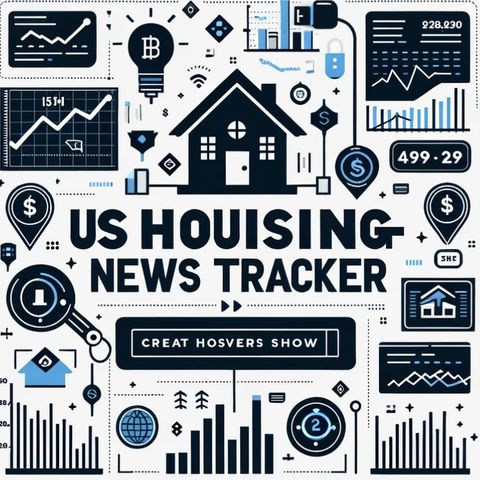US Housing Market Trends: Slowing Price Growth, Supply Challenges, and Consumer Caution

Descarga y escucha en cualquier lugar
Descarga tus episodios favoritos y disfrútalos, ¡dondequiera que estés! Regístrate o inicia sesión ahora para acceder a la escucha sin conexión.
US Housing Market Trends: Slowing Price Growth, Supply Challenges, and Consumer Caution
Esta transcripción es generada automáticamente. Ten en cuenta que no se garantiza una precisión absoluta.
Descripción
The US housing market is currently characterized by several key trends and challenges, reflecting both ongoing and recent developments. ### Market Movements and Price Changes Home prices continue to rise,...
mostra más### Market Movements and Price Changes
Home prices continue to rise, albeit at a slower pace. As of August 2024, home prices increased by 4.2% annually, according to the S&P CoreLogic Case-Shiller Home Price Index, marking the 15th consecutive all-time high[3].
The FHFA House Price Index showed a 5.1% year-over-year increase in June 2024, but a 0.1% month-over-month decline, indicating a slowdown in appreciation[2].
CoreLogic's data for September 2024 reveals a 3.4% year-over-year increase in home prices, with a slight 0.02% month-over-month uptick[4].
### Inventory and Supply Chain
Inventory levels remain tight but are slowly improving. The overall number of existing homes for sale as of September 2024 was 1.39 million units, a 23% increase from the previous year, but still only a 4.3-month supply[3].
New home construction has provided some relief, with inventory at its highest since early 2008, though it is still insufficient to meet demand. Housing starts for single-family homes fell 14.1% in July, and completions rose only 0.5% from June[1][2].
### Mortgage Rates and Affordability
Mortgage rates, while declining from their peak, remain high. The average 30-year mortgage rate was 6.88% as of late October 2024, which is still much higher than most homeowners' locked-in rates[3].
Lower mortgage rates have slightly boosted home sales, but affordability challenges persist. Homebuyers are waiting for rates to drop further before entering the market[2][3].
### Consumer Behavior
Consumers are cautious due to rate uncertainty and economic volatility. Existing homeowners are choosing to stay in their current homes longer, hoping for lower rates. Prospective buyers are also waiting, leading to sluggish home sales[3][4].
### Builder Sentiment and New Construction
Builder confidence continues to decline, with the NAHB/Wells Fargo Housing Market Index falling to 39 in August, below the threshold of 50 that indicates good conditions. Despite this, 33% of builders have slashed prices to boost sales, and 65% are offering incentives[1][2].
### Regulatory and Economic Context
The broader economy is expanding but slowing, consistent with a soft landing. Inflation is abating, with consumer price growth moving towards the Federal Reserve's 2% target. The labor market is cooling, with unemployment up and job growth moderating[2].
### Market Disruptions and Risks
Natural disasters and economic uncertainty, including the upcoming US election, are dampening demand and price appreciation. Certain markets, such as Provo-Orem, UT, and Atlanta-Sandy Springs-Rowsell, GA, are at high risk of home price declines over the next 12 months according to CoreLogic's Market Risk Indicator[2][4].
In summary, the US housing market is marked by high but slowly appreciating home prices, tight inventory, and high mortgage rates. While there are signs of slight improvements in affordability and inventory, consumer caution and economic uncertainty continue to impact the market. Industry leaders are responding with price cuts and incentives, but significant challenges remain.
Información
| Autor | QP-4 |
| Organización | William Corbin |
| Página web | - |
| Etiquetas |
Copyright 2024 - Spreaker Inc. an iHeartMedia Company
